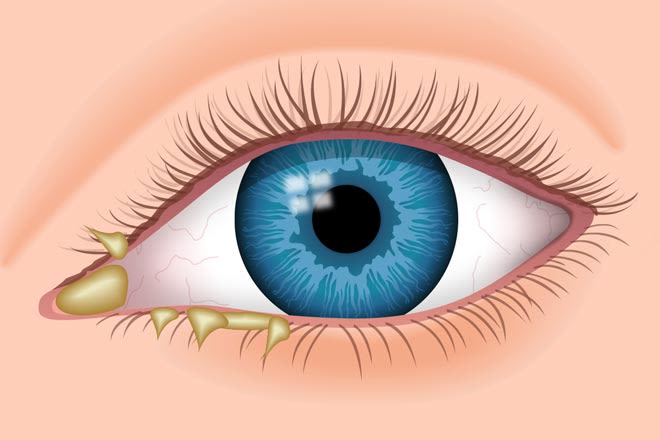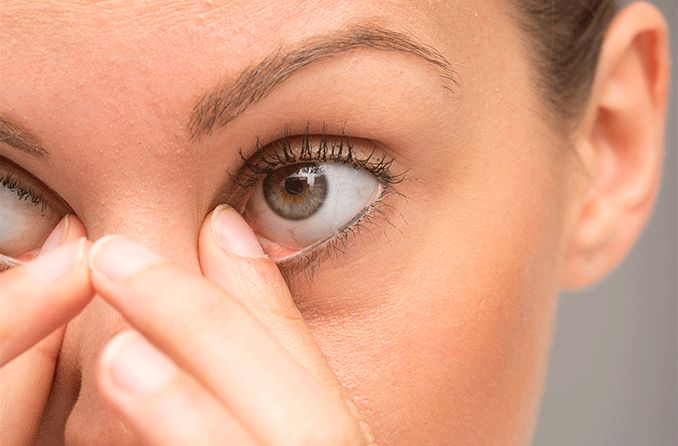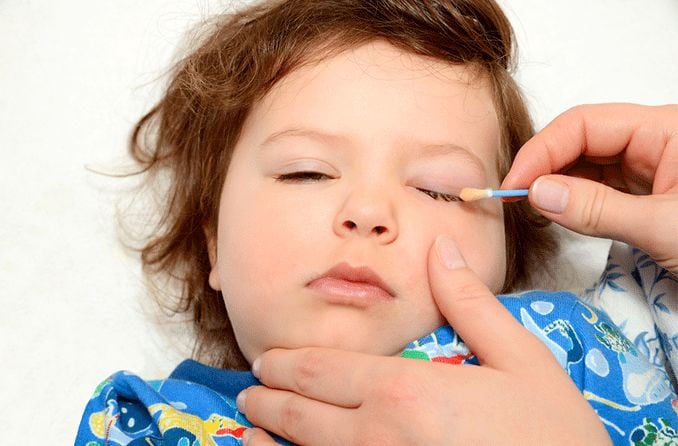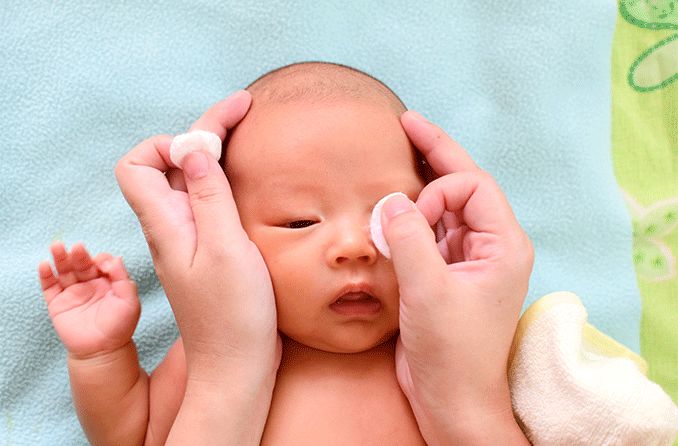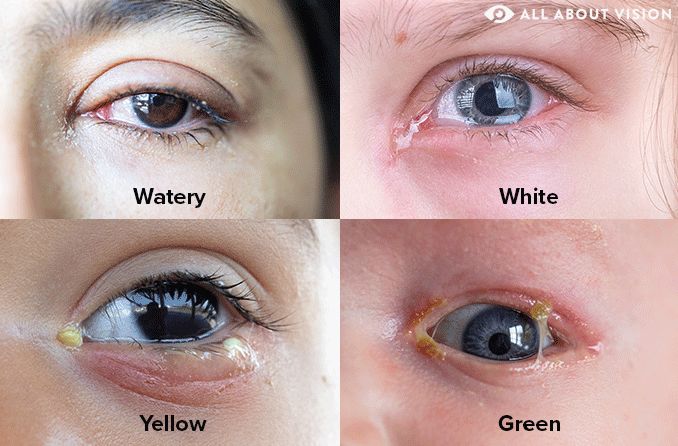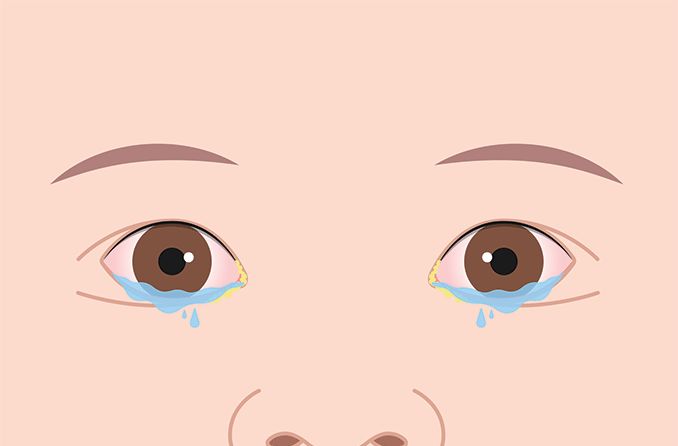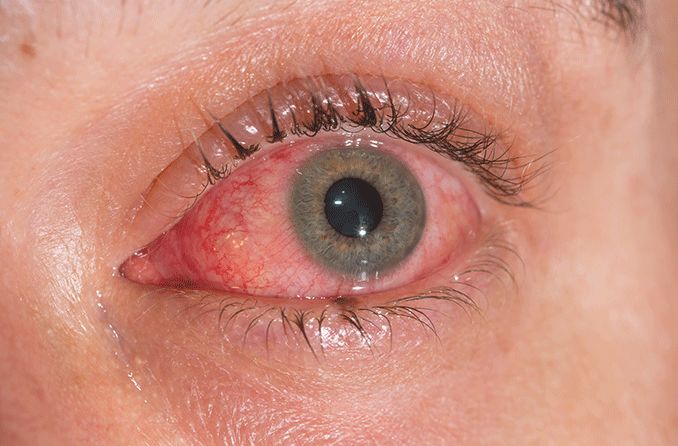Sleep in your eyes usually isn't cause for alarm, but if you notice a difference in consistency, color and quantity of eye gunk, it could indicate an eye infection or disease.
Common eye conditions associated with abnormal eye discharge include:
Conjunctivitis
Eye discharge is a common symptom of conjunctivitis (pink eye), an inflammation of the conjunctiva — the thin membrane that lines the "white" of the eye (sclera) and the inner surface of the eyelids.

Thick, yellow eye discharge can be caused by an eye infection.
In addition to itchy, gritty, irritated and red eyes , conjunctivitis typically is accompanied by white, yellow or green eye mucus which can form a crust along the lash line while you sleep.
In some cases, eyelid crusting can be so severe that it temporarily seals your eye shut.
There are three types of pink eye : viral, bacterial and allergic.
Viral conjunctivitis is highly contagious and is caused by a virus such as the common cold or herpes simplex virus. Eye discharge associated with viral pink eye typically is clear and watery, but may include a white or light yellow mucus component.
Bacterial conjunctivitis , as the name indicates, is caused by bacterial infection and can be sight-threatening if not treated promptly. Eye discharge is usually thicker and more pus-like (purulent) in consistency than viral pink eye, and is commonly yellow, green or even gray. Often, the sticky mattering will cause your eyelids to feel completely glued shut upon waking in the morning.
Allergic conjunctivitis is triggered by allergens — pollen, dander, dust and other common irritants that cause eye allergies . It also can be caused by an allergic reaction to chemical pollutants, makeup, contact lens solutions, and eye drops . Eye discharge associated with allergic conjunctivitis is typically watery.
Unlike viral and bacterial pink eye, allergic conjunctivitis is not contagious and always affects both eyes.
Other eye infections
In addition to conjunctivitis, there are many eye infections that cause abnormal eye discharge. These include: eye herpes (a recurrent viral eye infection), fungal keratitis (a rare but serious inflammation of the cornea ) and Acanthamoeba keratitis (a potentially blinding infection typically caused by poor contact lens hygiene or swimming while wearing contacts ).
Discharge from an eye infection varies considerably — it could be clear and watery or thick, green and sticky — so make sure you see your eye doctor promptly for an accurate diagnosis and treatment.
Blepharitis
A chronic disorder of the eyelids, blepharitis describes either inflammation of the eyelash hair follicles or abnormal oil production from the meibomian glands at the inner edge of the eyelids. A related condition called Meibomian gland dysfunction (MGD) can cause foamy eye discharge, eyelid crusting, as well as yellow or green eye pus, among other irritating and often painful symptoms.
Stye
A stye is a clogged meibomian gland at the base of the eyelid, typically caused by an infected eyelash follicle. Also called a hordeolum , it resembles a pimple on the eyelid margin and is commonly accompanied by redness, swollen eyelids and tenderness in the affected area. Yellow pus, eyelid crusting and discomfort while blinking also can occur.
An eye stye usually resolves on its own, but there are also some home remedies for styes you can try. It's important to refrain from squeezing the pus from a stye to reduce the risk of the infection spreading to other areas of the eye.
Dry eyes
Insufficient tear production or dysfunction of the meibomian glands can lead to dry eye syndrome — an often chronic condition in which the surface of the eyes is not properly lubricated and becomes irritated and inflamed.
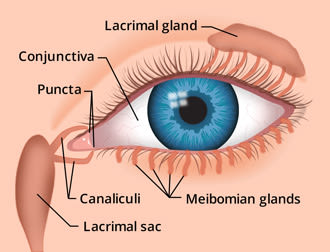
The tear drainage system keeps the eye moist and protected.
Symptoms of dry eyes include red, bloodshot eyes, a burning sensation , blurry vision and a feeling something is "in" your eye ( foreign body sensation ). Sometimes, dry eyes also can cause a very watery eye discharge to occur.
Contact lenses
If you wear contact lenses, you may find more sleep in your eyes than normal. This can be due to a number of reasons, including a contact lens-related eye infection , contact lens discomfort resulting in dry and irritated eyes, as well as rubbing your eyes more while wearing contacts.
If you experience an increase in eye discharge when wearing contacts, remove your lenses and see your eye doctor to rule out a potentially serious eye condition.
Eye injury
A foreign body in the eye (such as dirt, debris or a chemical substance) or an eye injury can cause your eyes to secrete a watery discharge as a natural protective response.
If eye pus or blood in the eye (subconjunctival hemorrhage) occurs after an eye injury, see your eye doctor immediately for treatment. All eye injuries should be treated as a medical emergency.
Corneal ulcer
A corneal ulcer is a sight-threatening, abscess-like infection of the cornea , usually caused by trauma to the eye or an untreated eye infection. If not treated promptly, corneal ulcers can lead to complete vision loss. Eye pain , redness, swollen eyelids and thick eye discharge are characteristic of a corneal ulcer. Eye pus can be so severe that it clouds the cornea and impairs vision.
Dacryocystitis
When a tear duct is blocked, the lacrimal sac in the tear drainage system leading to the nose can become inflamed and infected, causing a tender and swollen bump to appear under the inner eyelid. In addition to pain and redness, common symptoms of dacryocystitis include watery eyes, a sticky eye discharge and blurred vision.
